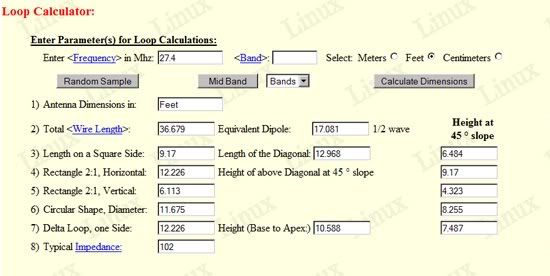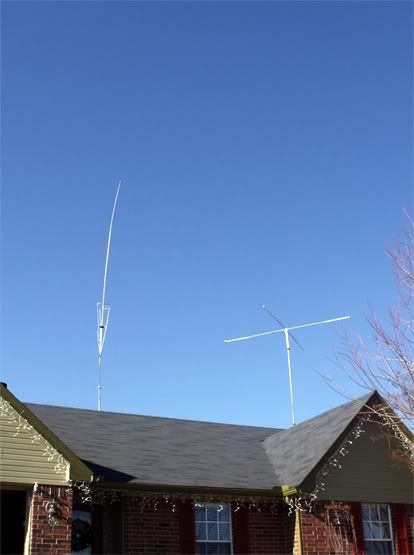So far, just the recommended length. When i get the analyzer on it I may have to make adjustments. We'll see.
If/when you do; could you also check it for 2:1 VSWR please?
So far, just the recommended length. When i get the analyzer on it I may have to make adjustments. We'll see.
If/when you do; could you also check it for 2:1 VSWR please?
Now that's interesting. I'll have to think on this some more. I'll look around for this kind of info. You have any links?
Well sure you can. Here it is:
The dimensions are dictated by the length of the wire, which is viewable in the photo of the calculator I used to determine the wire length, spreaders, etc.
The parts in the above photos are:
two sets of 2" x 8-32 SS screws and nuts with washers.
3/4" soc PVC caps qty 3
3/4" tee all soc
2 feet long 1-1/2" PVC tube
3" x 1-1/2" adapter
6 inch length of 3" PVC tube
one stick of 10' x 3/4" PVC
2 sticks of 1/2" x 10' EMT (conduit)
prepared 6' piece of 75 Ohm coax
some tape to wrap around the EMT to take out slack between its diameter and the ID of the 3/4" PVC.
1. Take the 3 x 1.5 adapter and remove the stop inside the 1.5" end so the 1-1/2" PVC tube can go all the way through a couple inches. This is to make it sturdier than if the stop is in place. Glue the two pieces together as shown in the photos. I used self-drilling screws also for reinforcement.
2. Glue the 6" x 3" PVC tube into the adapter. I used self-drilling screws for reinforcement.
3. Drill two sets of holes into the 3" x 6" PVC tube at 90° to each other offset from each other.
4. Insert the two joints of EMT through the offset holes. Be sure they are inserted half way their lengths. This will form the characteristic cross shape of Quad spreaders. Secure them to each other in the center as you see done in the above photo. This provides stability and assures the spreaders remain in place.
5. Cut the 10' joint of 3/4" PVC into 4 equal parts - 2.5' each. Place caps on three of them, and the tee on the fourth.
6. Drill holes through the ends/caps of the three capped pieces of PVC so the wire can pass through them. Drill two holes, one in each end of the tee for the connector end of the loop as shown in the photos above.
7. Wrap sufficient amount of tape around the EMT spreaders to remove slack between the 3/4" x 2.5' sections when they are slipped onto the spreaders. Do this near the end of the EMT, and at 49" out from the outside edge of the 3" PVC center tube.
8. Slide the PVC sections onto the four EMT spreaders. Thread the pre- measured, pre-cut wire through the holes of the three caps securing the ends of the loop wire with the SS screws on the two sides/ends of the tee. Slide the four PVC sections out equally from the center until the wire is taut.
9. attach 6' piece of 75 Ohm coax. Tape or zip-tie this along the spreader . Done.

Thank You Homer BB your so professional !!!:w00t:

Some have said it's hard to tell whether the loop is mounted vertical or horizontal. I hope this helps:

Some things are so lovely it almost makes you cry . . .
